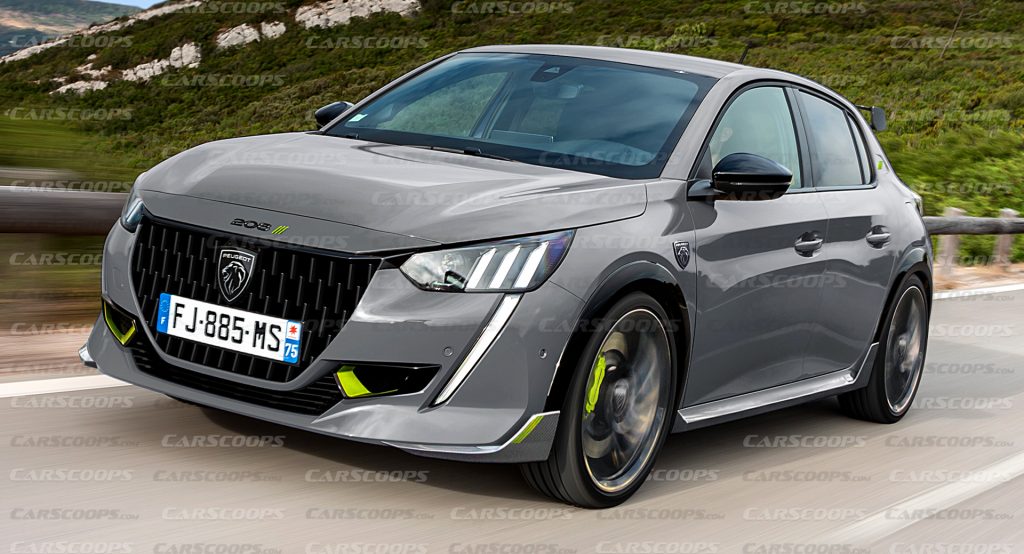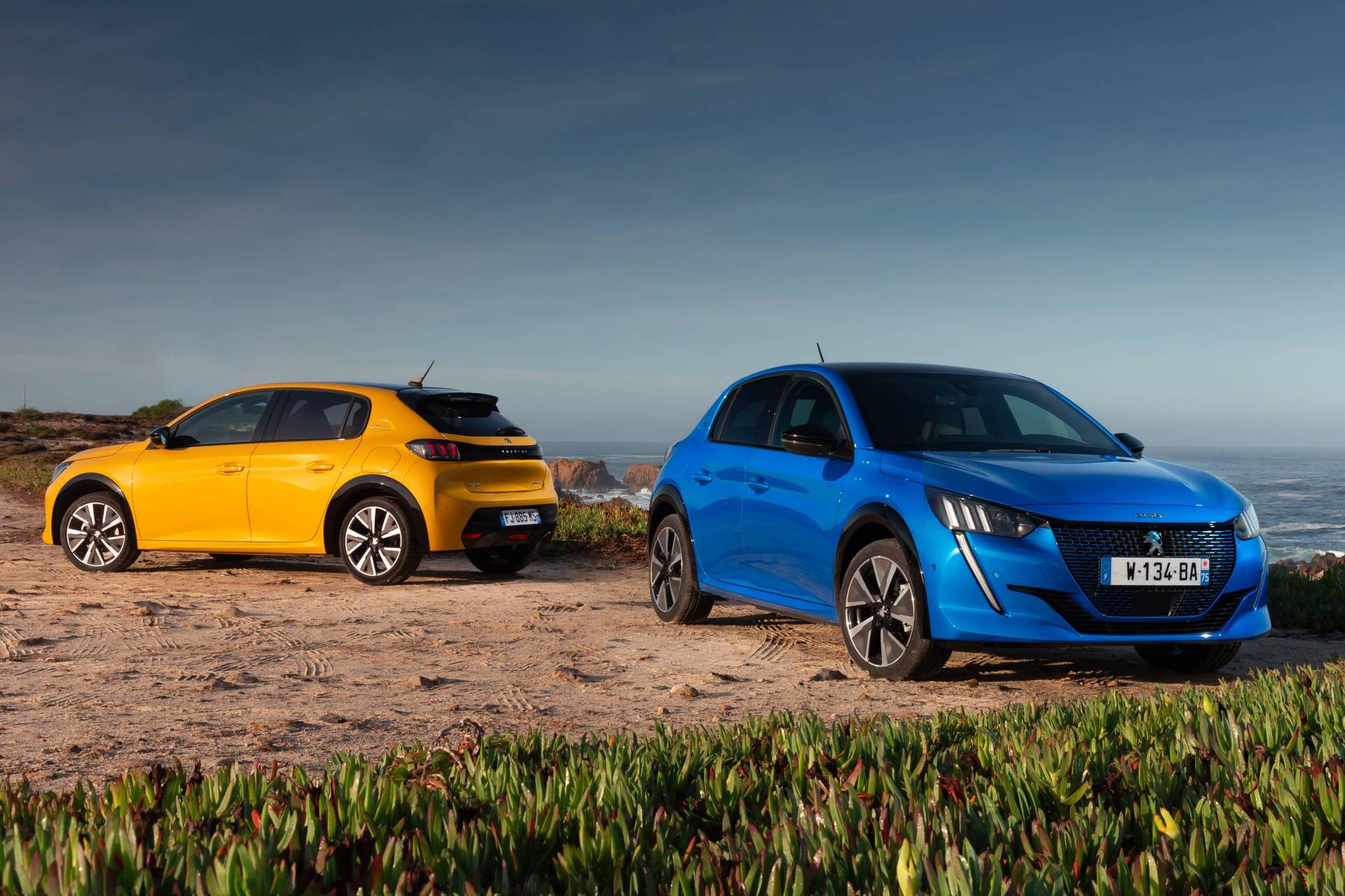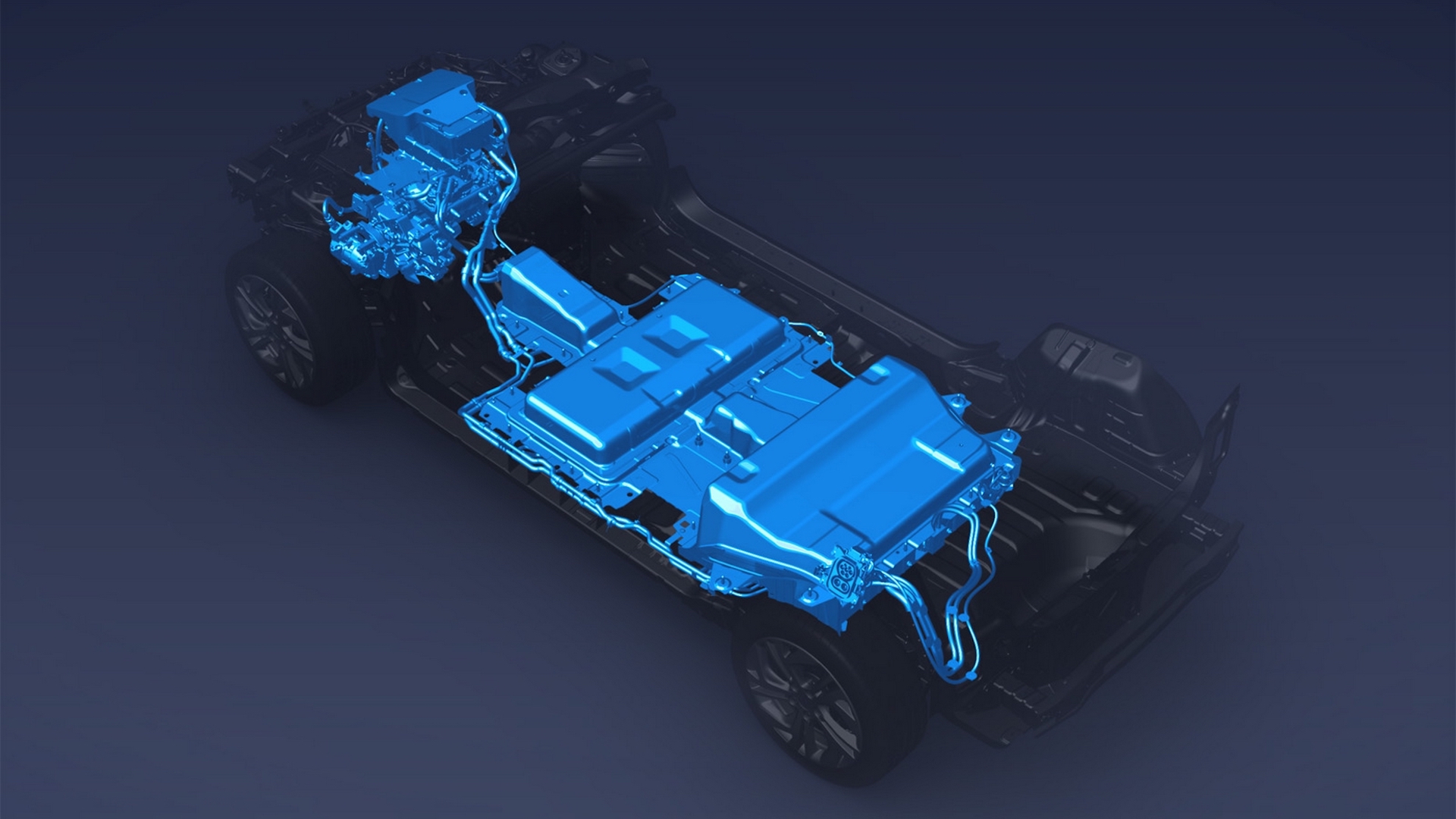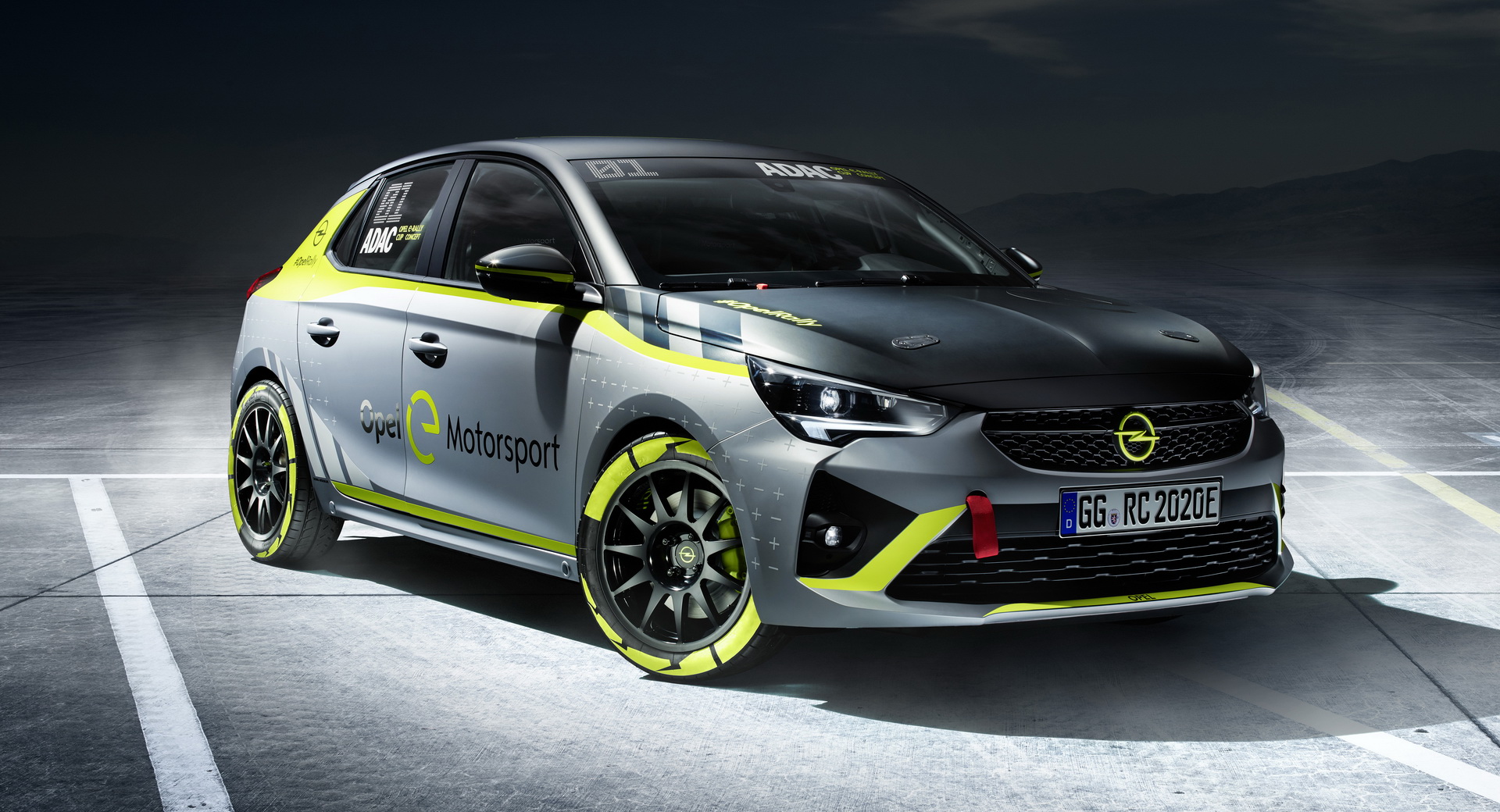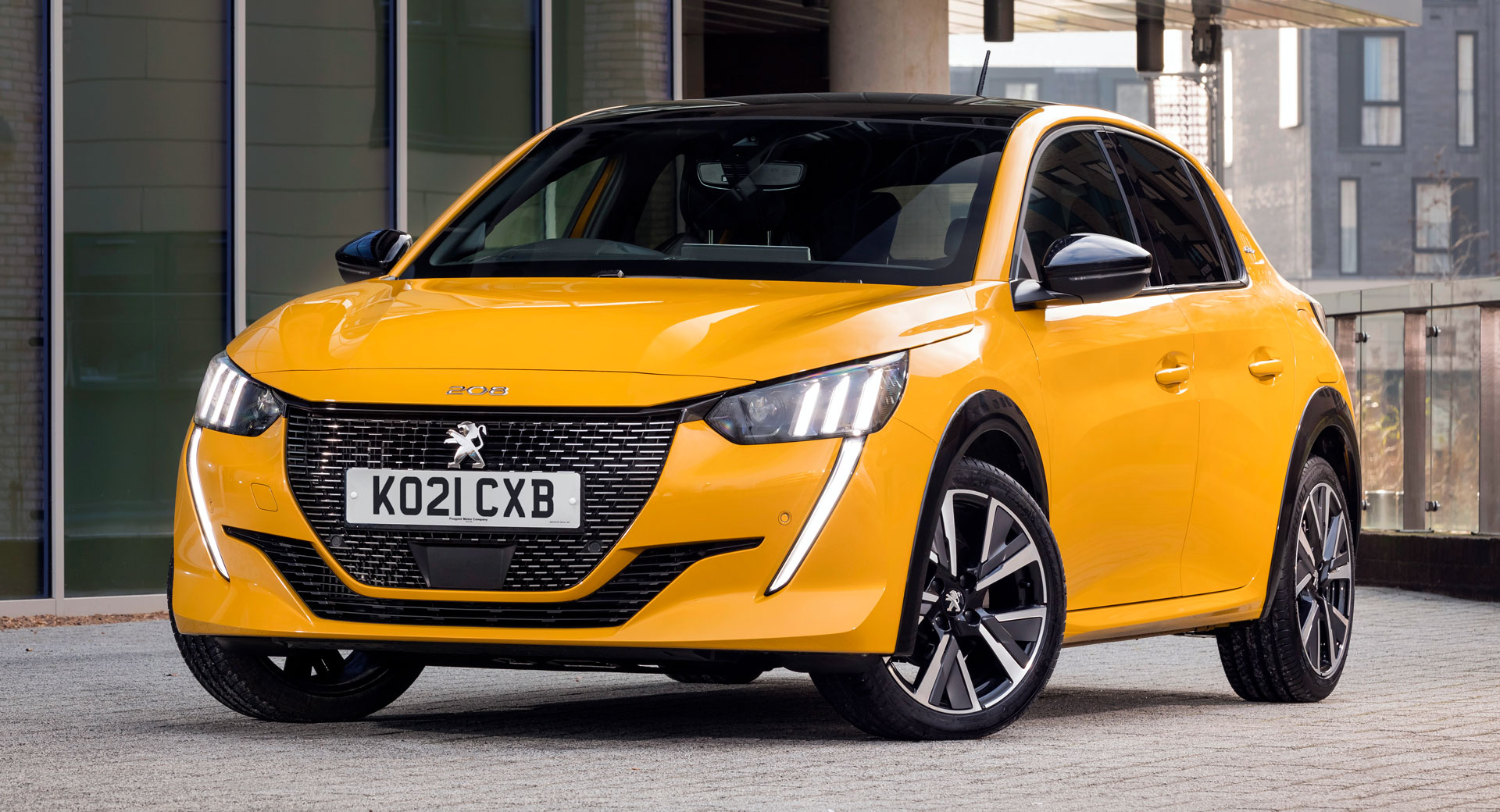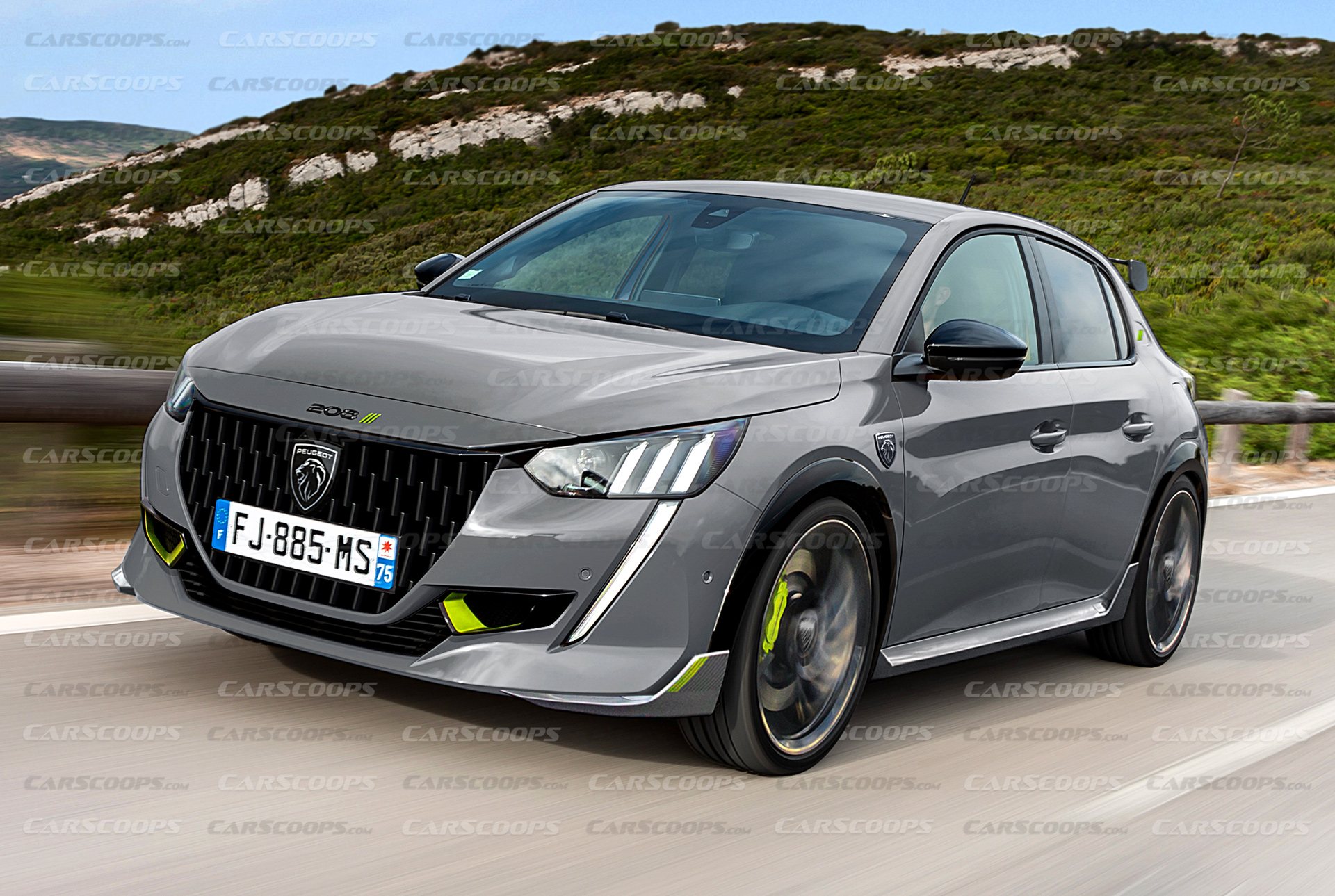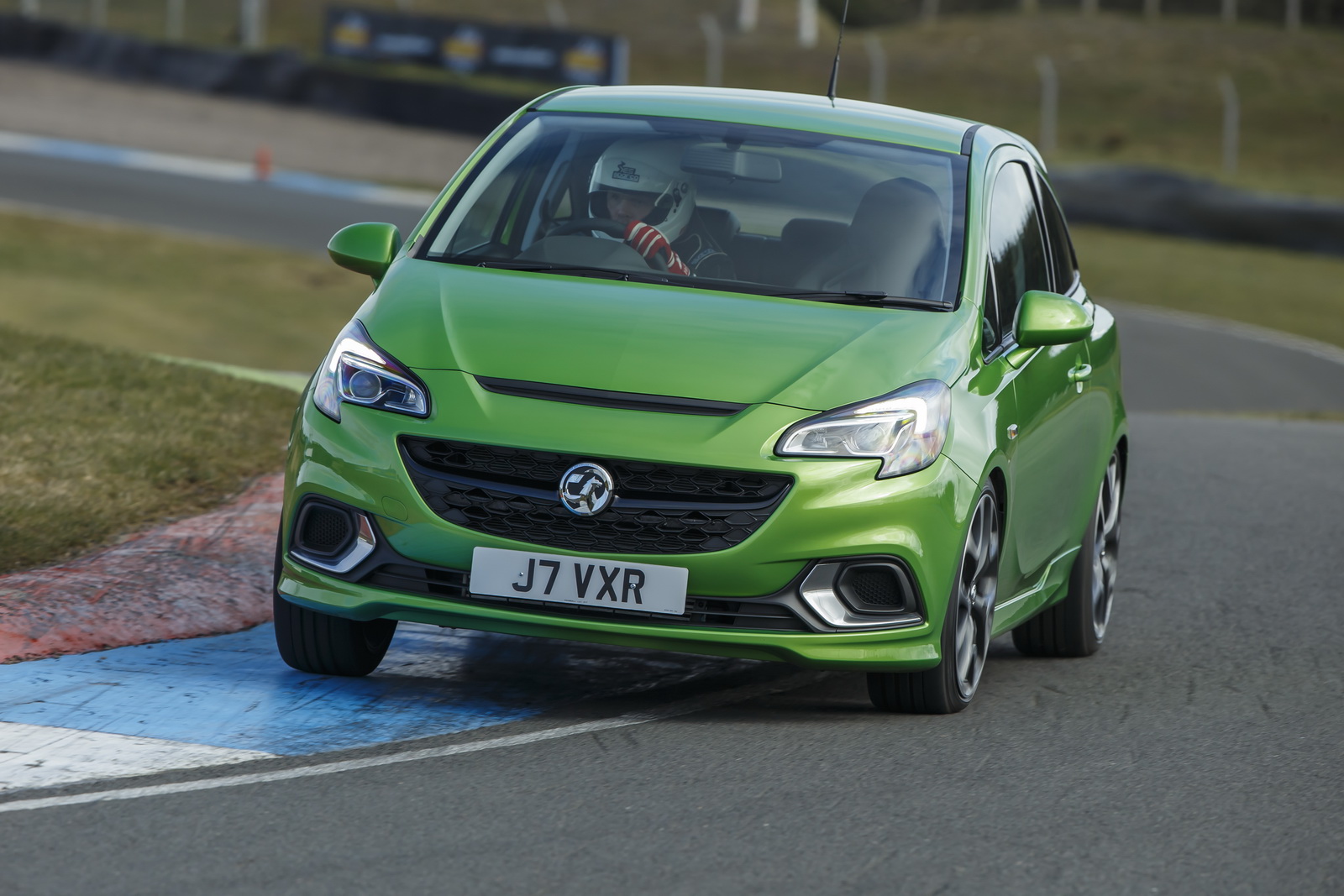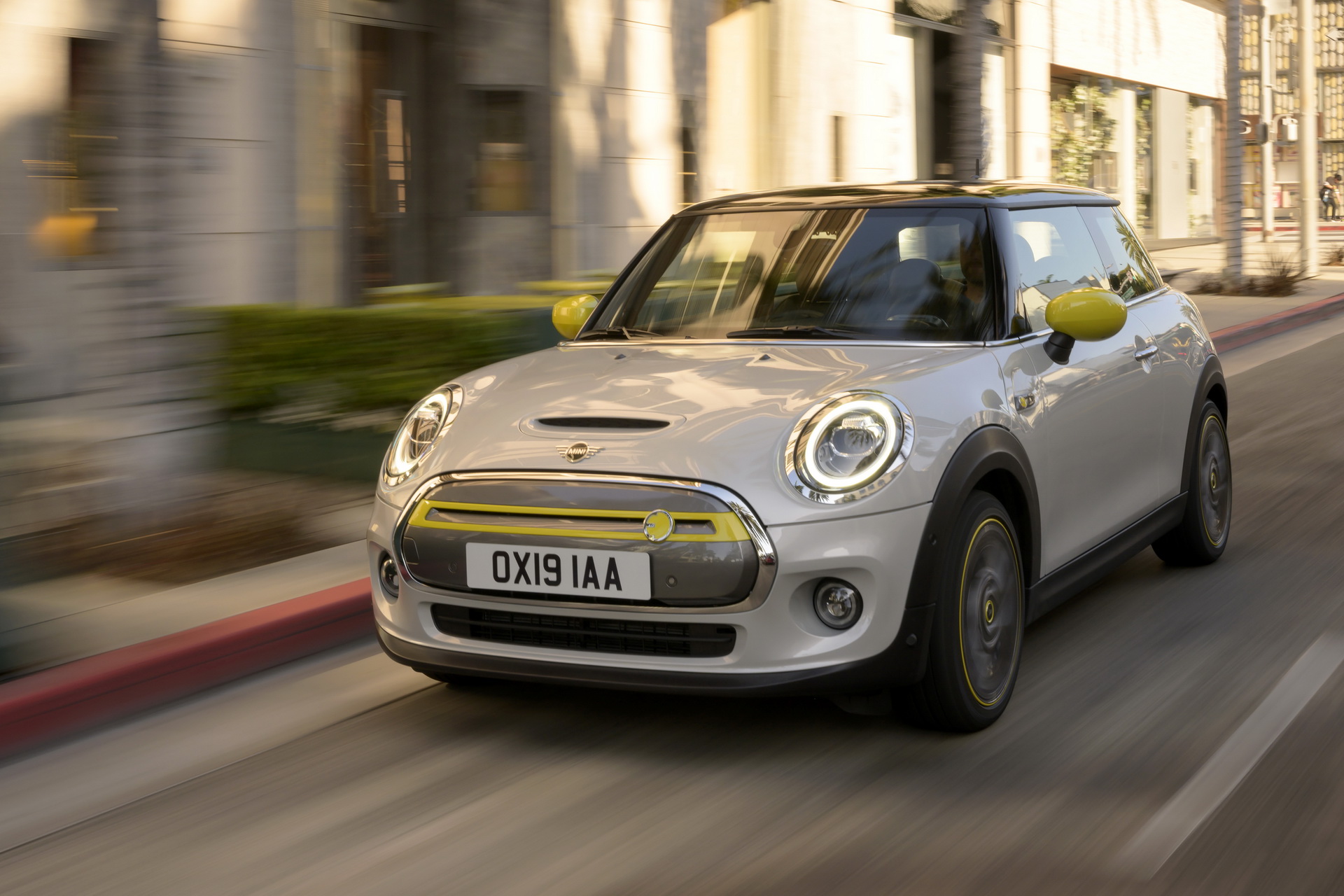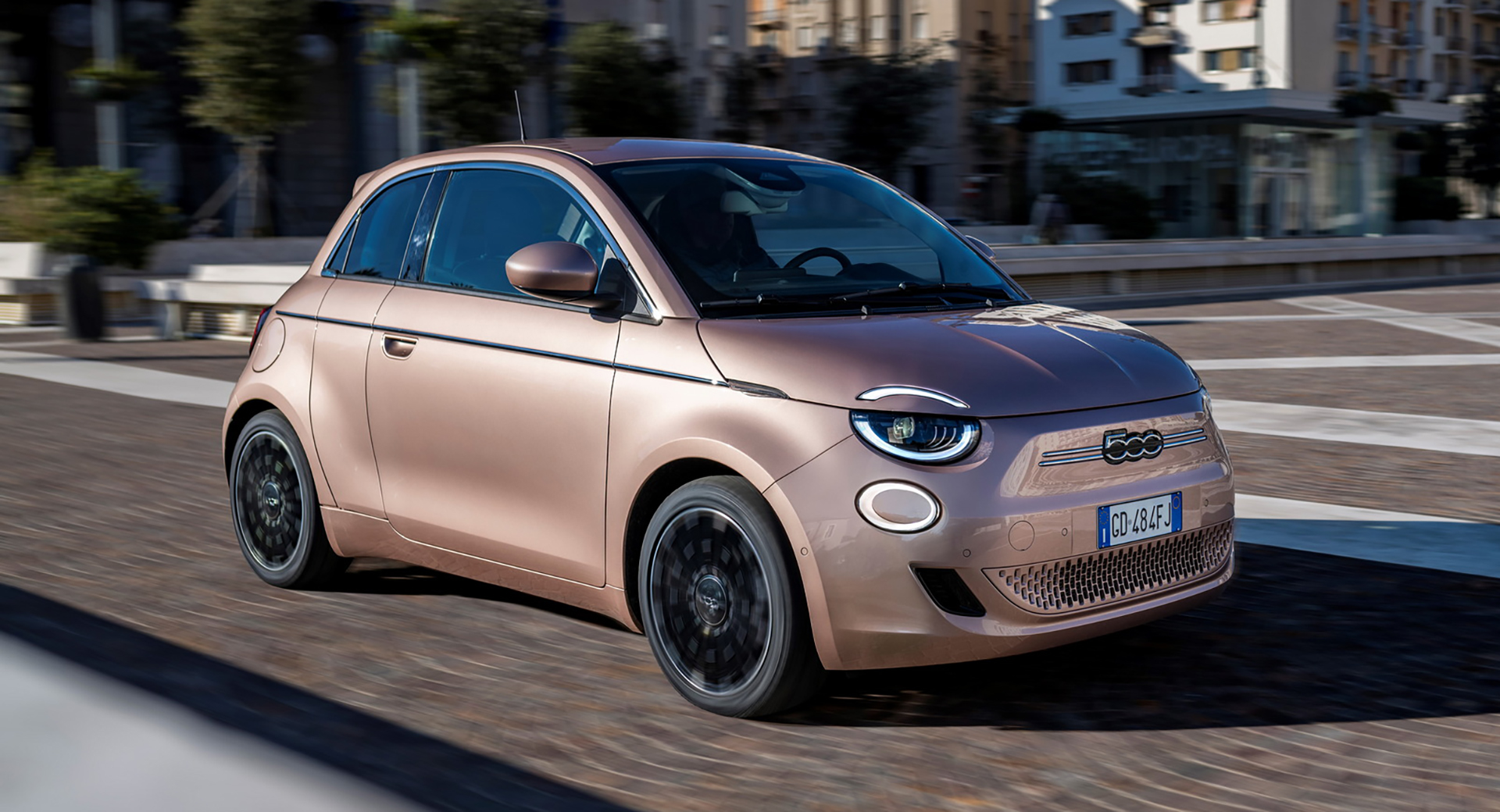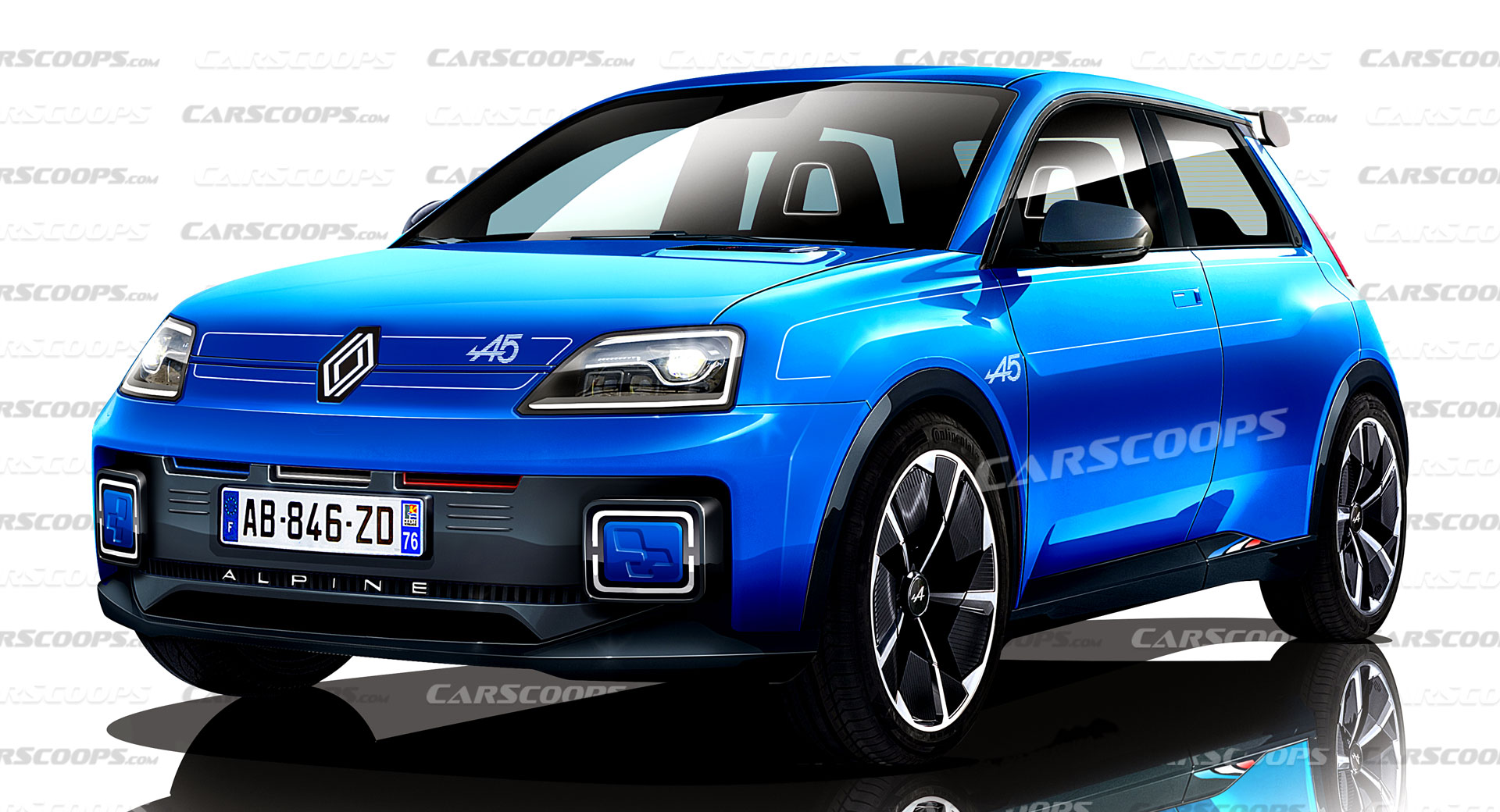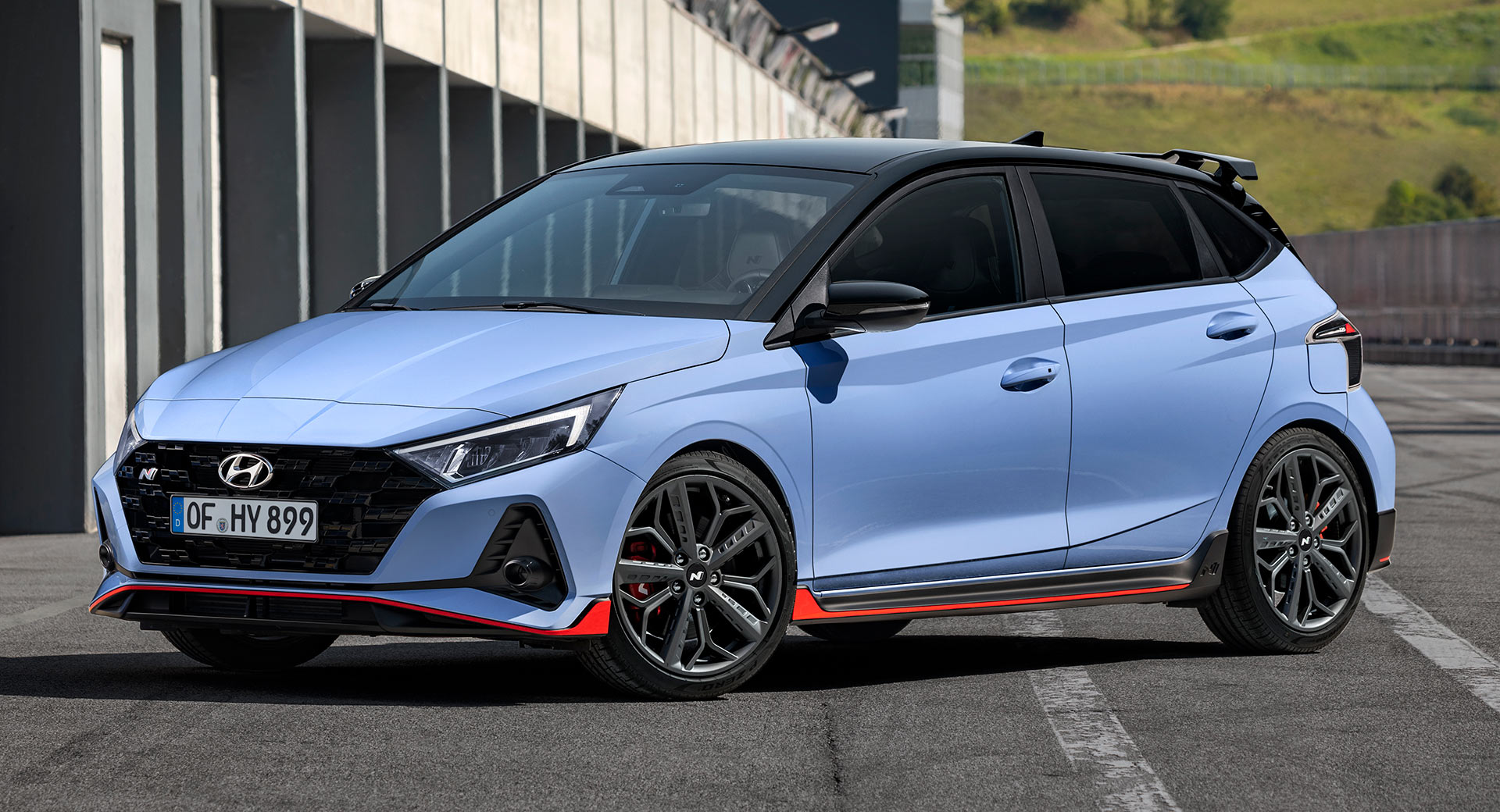The illustrations pictured in this article were made by Jean Francois Hubert/SB-Medien for CarScoops and are based on the regular production Peugeot 208. They are speculative renders that are not related to nor endorsed by Peugeot.
Back in the 1980s and 1990s Peugeot’s GTIs were the hot hatches to beat. And in recent years, following a fallow period where rival Renaultsport and its Clios and Meganes was king, Peugeot proved it could still deliver, launching acclaimed models like the 208 GTi and 308 GTi.
But now both carmakers are getting to ready to take the hot hatch genus into new, electrified territory. By 2024 Renault will field the Alpine A5, based on the retro 5 supermini EV revealed in January 2021, and Peugeot is getting ready to unleash the 208 PSE.
PSE stands for Peugeot Sport Engineered, and is the marque’s new performance sub brand. We’ve already seen the label used to good effect on the 355 hp 508 PSE, but that’s a hybrid featuring a front-mounted petrol engine augmented by a small electric motor driving each axle. With the 208 PSE, the badge will be applied to a full EV for the first time.
Based On The Peugeot e208
Peugeot already has an electric 208 in its line-up, and while it’s not necessarily marketed as a performance car, the e208 pictured above is the quickest 208 you can buy and will serve as the foundation for the PSE.
The e208’s powertrain consists of a 50 kWh battery and a 100 kW (134 hp/136 PS) electric motor driving the front wheels. That power output, along with 192 lb ft of instantly available torque, enables it to reach 62 mph (100 km/h) in 8.1 seconds, although the top speed is artificially limited to 93 mph (150 km/h).
Related: Here’s What We Know About Alpine’s 2024 Hot Hatch
We’ve driven one on road and track, and found it surprisingly fun. While it’s heavier than ICE 208s (and getting on for twice as heavy as a 205 GTi), you notice that mass less in cornering (where it’s disguised by the low center of gravity), than under braking (where it’s not disguised at all).
The e208 is also pretty swift at the charging station. That 50 kWh battery gives it a WLTP range of up to 211 miles (340 km), and 100 kW charging capability allows you to top up to 80 percent full in 30 minutes.
Battery Ball-Aches
But surely the 208 PSE will be both faster and hungrier? Maybe. Peugeot’s problem is that it might be stuck with the e208’s smallish 50 kWh battery. Even getting that to fit involved breaking the battery pack into sections and fitting the bits in the voids filled by the fuel tank, catalyst and exhaust on ICE 208s.
Back in 2020 Car Magazine claimed the PSE would stick with the e208’s front-mounted motor and front-wheel drive layout, but feature a more powerful motor putting out around 168 hp (170 PS). And if that does happen, and Peugeot sticks with the 50 kWh battery, we can expect to see the performance improve, probably delivering a sub-7second 0-62 mph time, but the electric driving range will also fall from the e208’s 211 miles.
Twinned With The Opel Corsa OPC/Vauxhall Corsa VXR
But is it possible that Peugeot might not even bother upgrading the front motor? One bit of news indirectly suggesting that might be the case came from Auto Express in its story about the upcoming electric Vauxhall Corsa VXR and its Opel Corsa OPC twin, which could take inspiration from the limited edition Corsa-e Rally competition car.
The standard Corsa is built on the same e-CMP platform as the 208, and the Corsa-e is powered by exactly the same combination of 134 hp motor and 50 kWh battery as the Peugeot 208e (even the rally version, in contrast to what its looks suggest, used the same mechanicals). Auto Express claimed the Corsa VXR EV would retain the stock powertrain package and focus on improving handling instead. It quoted Vauxhall boss Stephen Norman as saying “we have more than enough [power]. But we can add performance in other ways.”
Would Peugeot really introduce a PSE-badged flagship hot hatch with no more power than the regular e208 which by the way looks great when decked out in GT or GT Premium trim, as seen here? We’re not so sure, particularly since its Alpine A5 rival is rumored to have 215 hp at its disposal.
How Will The 208 PSE Stand Out?
Peugeot’s best remembered 1980s hot hatches all had three doors, though the 309 GTi had the option of five, as did the recent 308 GTi. But modern hot hatch buyers seem to value practicality more than their ancestors, so the PSE will get the same five-door layout as every other 208.
Related: Watch A Peugeot 508 PSE Keep Pace With A BMW M2 At The ‘Ring
The GT-spec 208 already does a solid visual impression of a hatch thanks to its contrasting wheelarch trims, but we expect the 208 PSE to further accentuate the sporty feel with a lower suspension and an increase in wheel size from the GT’s current 17-inch maximum, though that would come at the expense of some electric range.
Like other facelifted 208s, the PSE will wear the new Peugeot badge fixed to the front of the latest 308, and first seen on the 2018 e-Legend concept.
And if it takes its lead from the 508 PSE, the hottest 208 is likely to feature lurid green detailing, gloss black trim, a rear diffuser, vertical grille fins and PSE ‘Kryptonite’ claw graphics. We also expect to see aerodynamic devices on the lower bumper and sills and a spoiler mounted above the rear window.
When Is It Coming? What’s It Going to Cost?
Auto Express claims the electric Corsa VXR (previous ICE version shown above) will be on sale in Europe in 2022, which could tie in with other sources who claim the 208 PSE will be launched to coincide with the 208’s mid-cycle refresh for the 2023 model year. However, if the car sounds tempting but are based in North America, you’ll have to be content to admire it from afar as Stellantis has scuppered plans to bring Peugeot to North America.
As for cost, an e208 in top-spec GT Premium trim already costs £33,975 ($47,200) before the UK government’s £2500 ($3500) electric vehicle grant has been applied. Depending on how much extra power, if any, and equipment Peugeot adds to create the 208 PSE, we could be looking at £36-38,000 ($50-53,000).
Peugeot 208 PSE, Meet Your Rivals
Small electric hot hatches aren’t exactly thick on the ground right now. In fact, the only car that comes close to rivaling the 208 PSE is the Mini Electric. Essentially a zero emissions Cooper S, it serves up a solid 182 hp and can sprint from 0-62 mph in 7.3 seconds.
Related: Peugeot Will Electrify Its Whole Range In Europe By 2025
It’s also surprisingly affordable, with prices starting at £26,000 after the UK government grant (it costs from $29,000 in the U.S.). On the downside, the three-door-only Mini Electric is even more cramped than a regular Mini because of how the battery is located under the rear seat, and that battery has a capacity of just 32 kWh, resulting in a sub-150-mile WLTP range (and a pathetic 114 EPA miles).
Also small, but significantly slower, is the new Fiat 500e. You get a choice of 23.7 kWh or 42 kWh batteries and a 116 hp front-mounted motor that can get you to 62 mph in 9 seconds. That doesn’t sound like anyone’s idea of a hot hatch, but things should improve when Fiat works its Abarth magic on the silent 500 in coming years.
Renault’s Alpine A5, part of the sporty brand’s expansion away from a simple one-model sports car-focused line-up, is arguably the 208’s biggest rival. And if it does get the 215 hp motor from the Megan E-tech, it’s going to make the PSE look seriously slow.
Moreover, let’s not forget conventional ICE hatches. They won’t be around forever, but while they are, plenty of buyers will be happy to stick with what they know. And when a car like the Hyundai i20 N offers 201 hp, 6.2-second zero to 62mph capability and a 300+ mile range for less than £25,000 ($35,000) it’s hard not to see the appeal.
Are you excited about the prospect of an electric hot hatch infused with Peuegot’s chassis tuning know how, or do you think the 205 GTI would be turning in its grave? Leave a comment and let us know.







